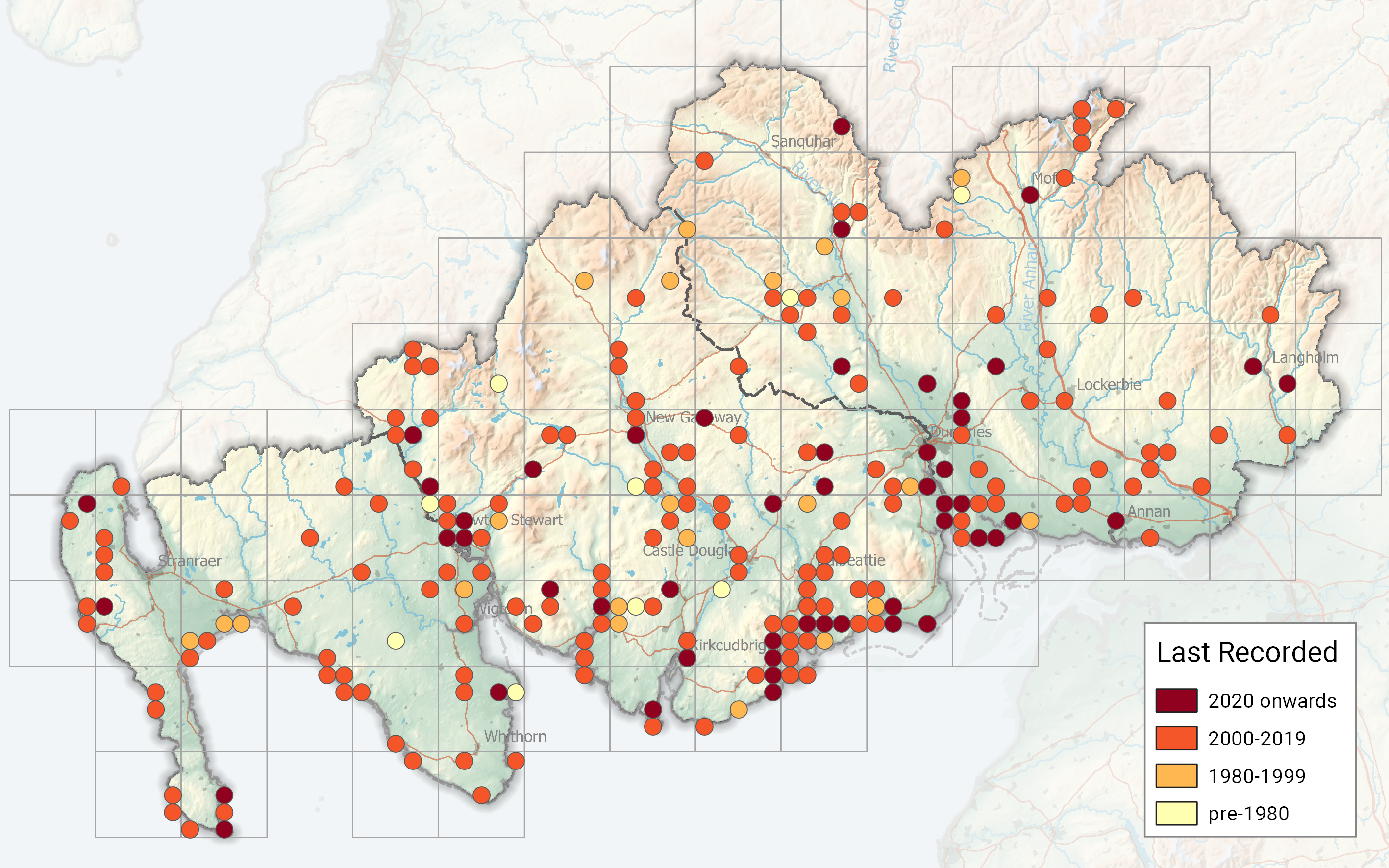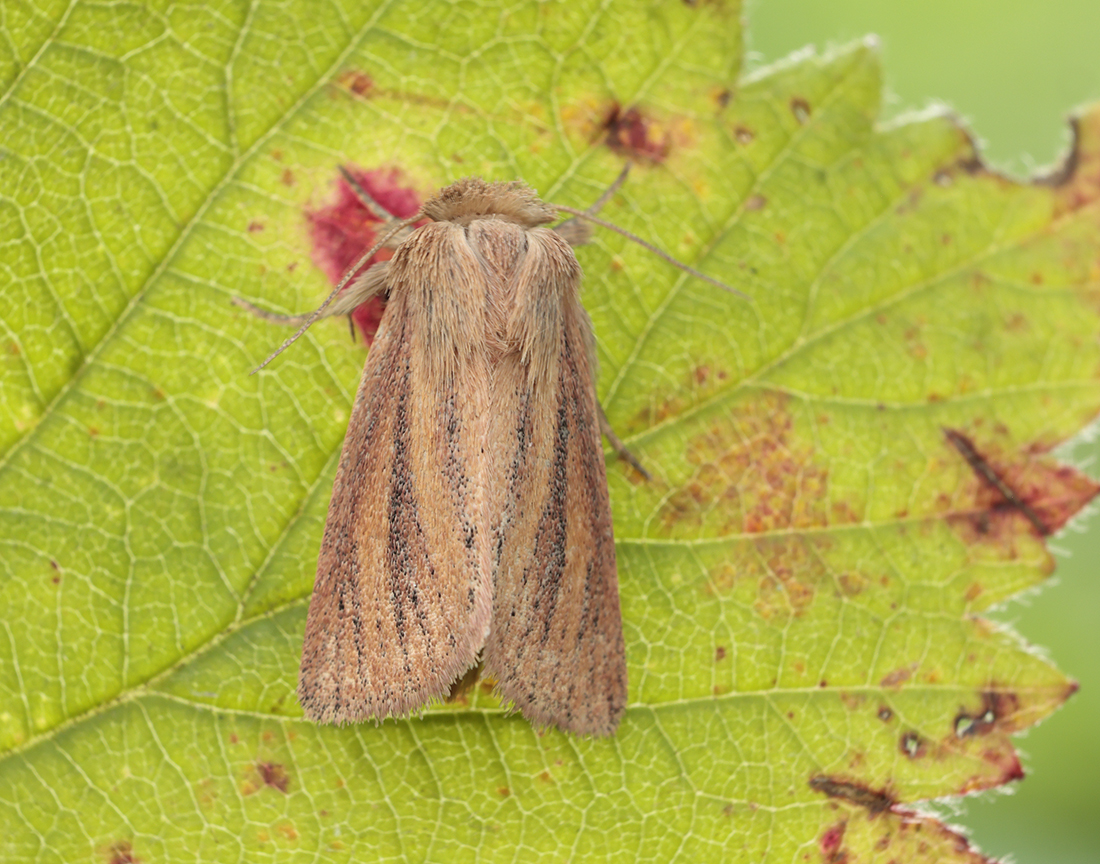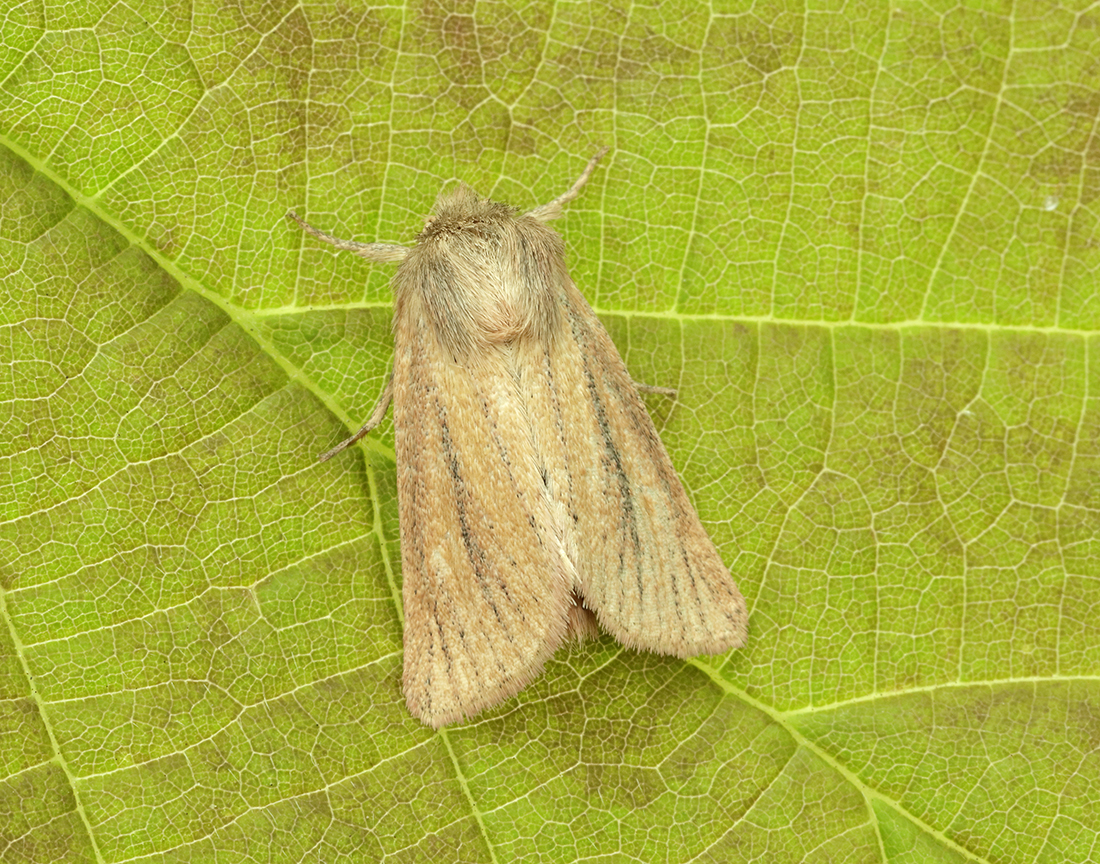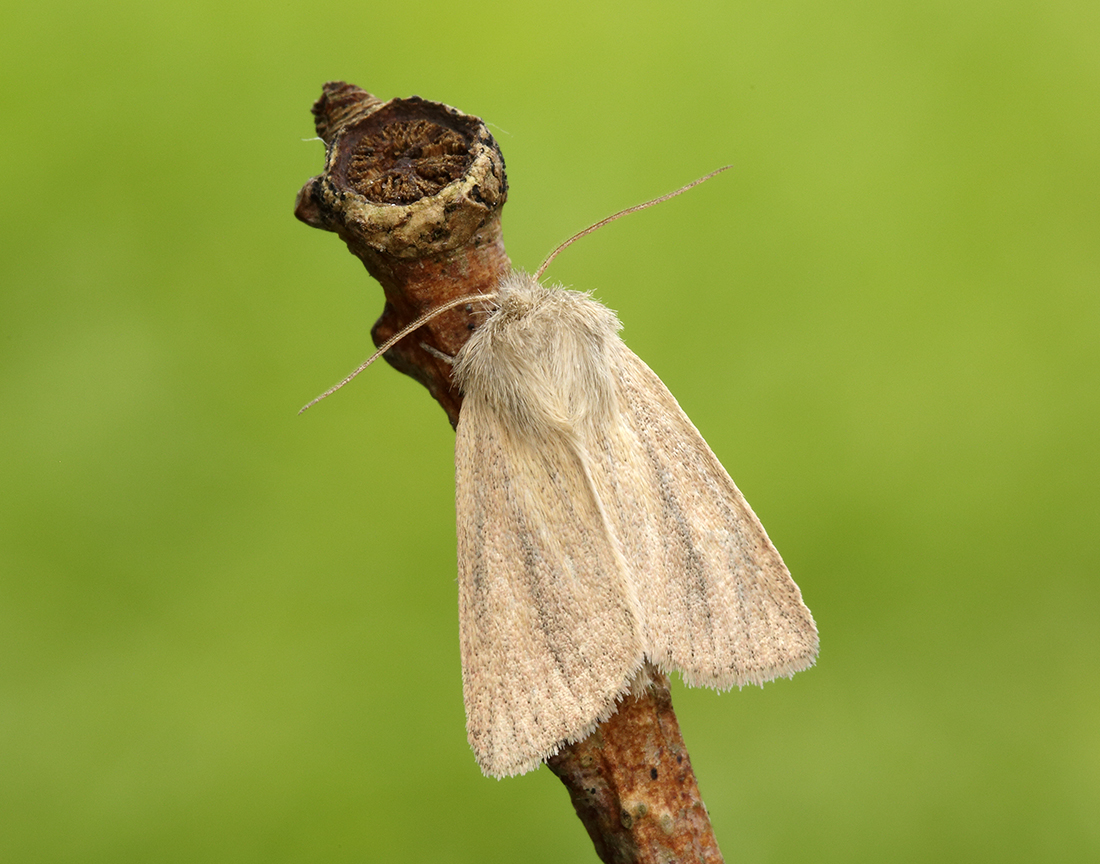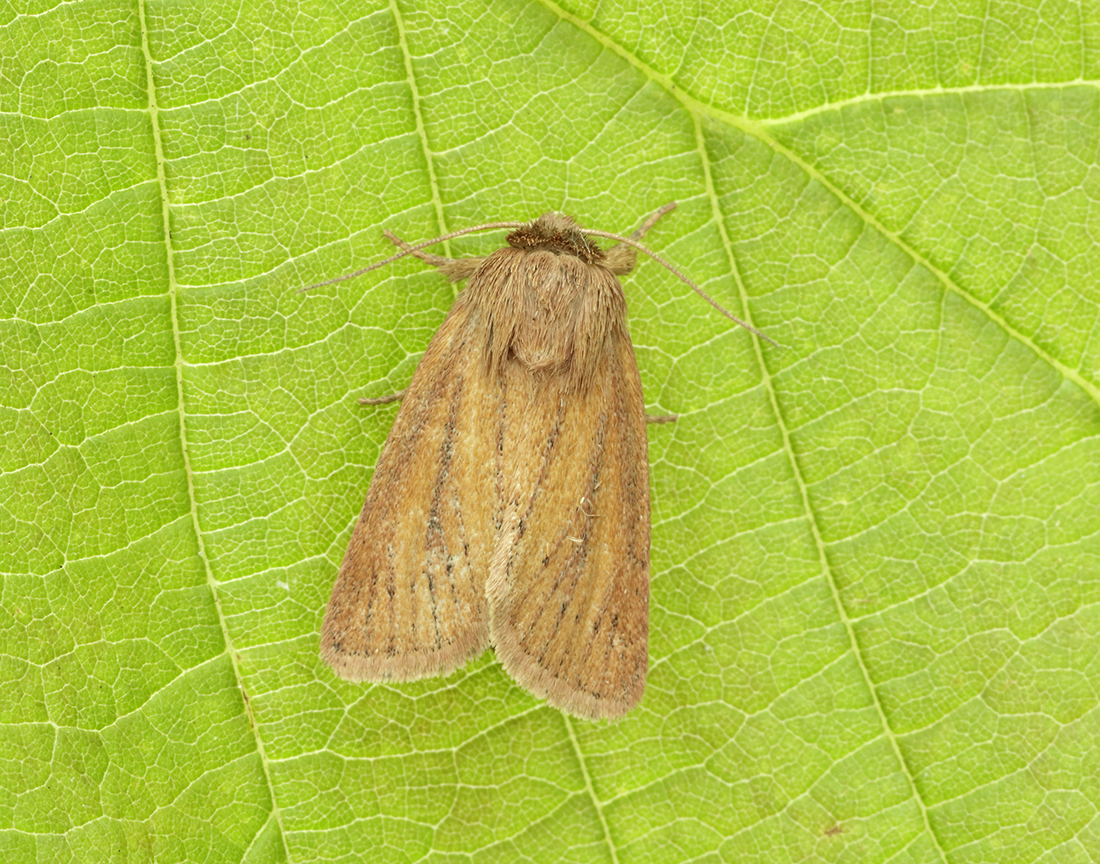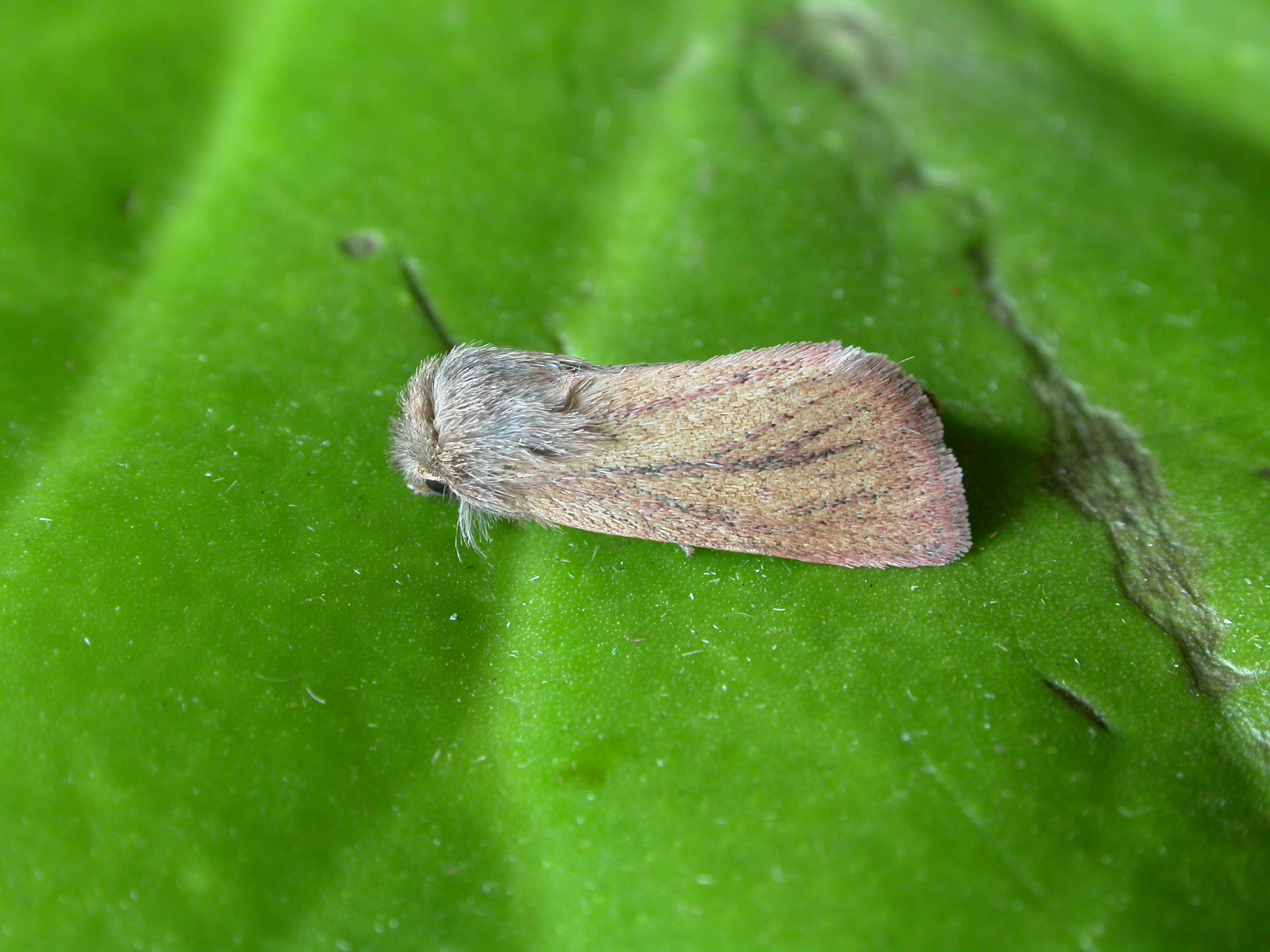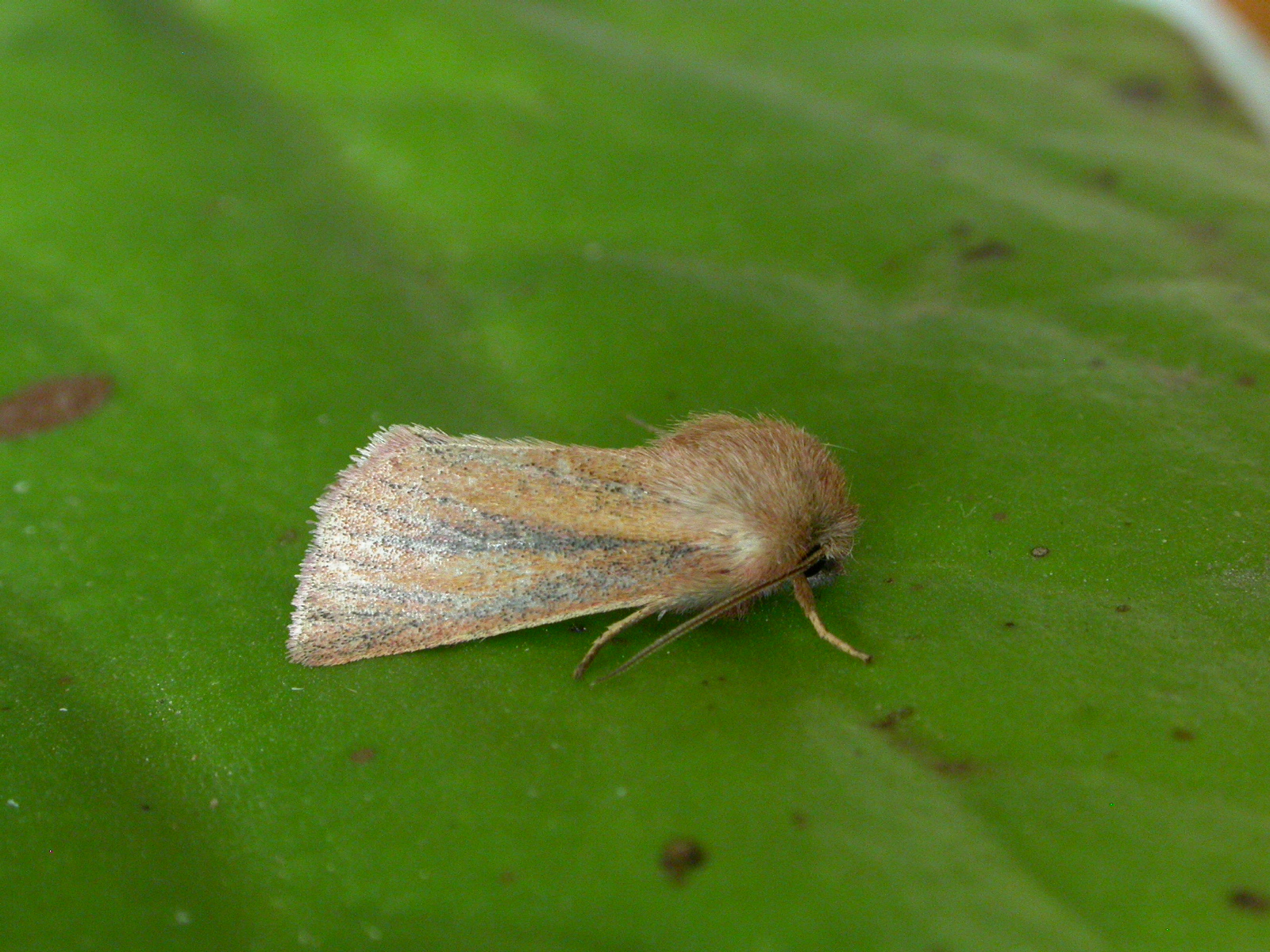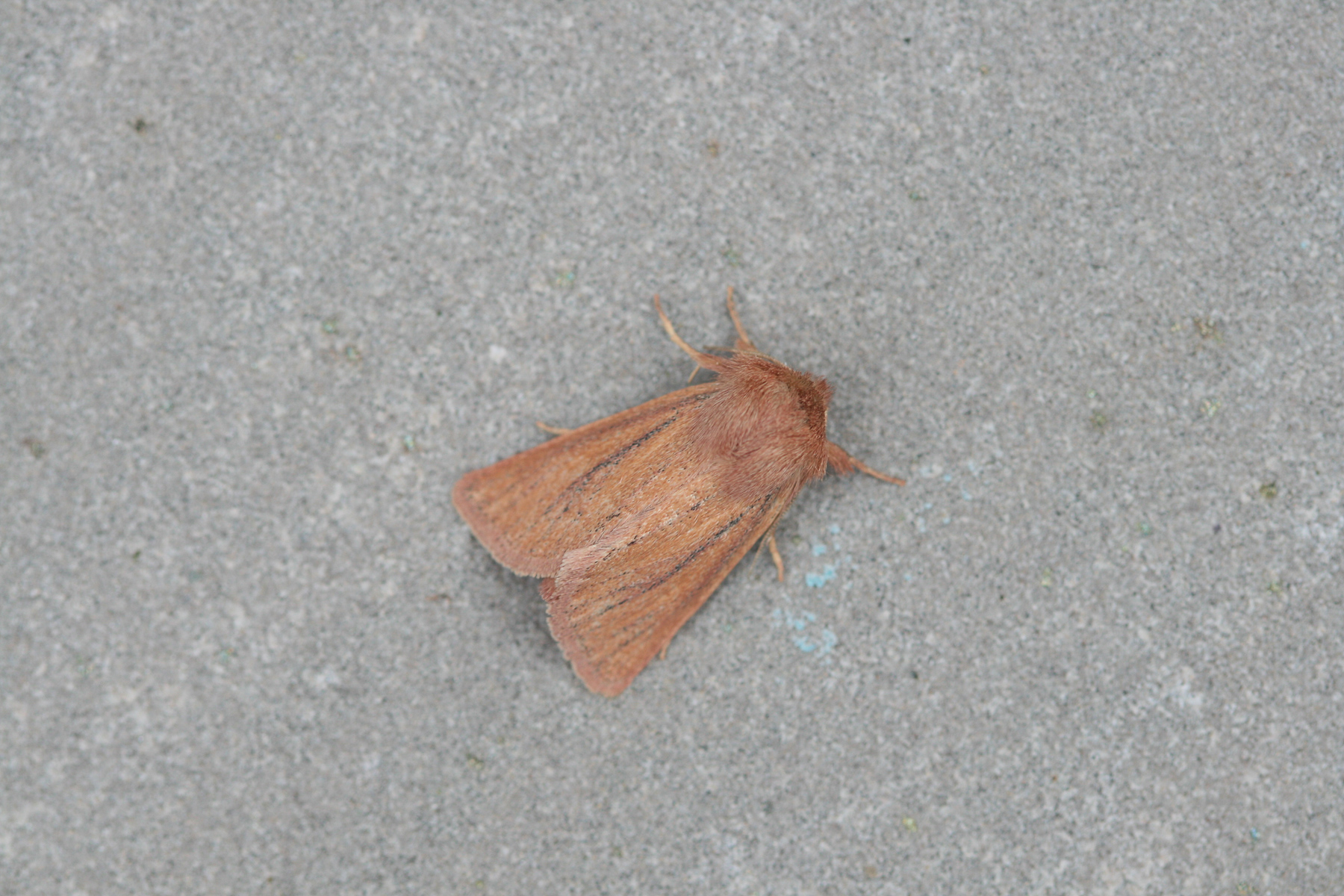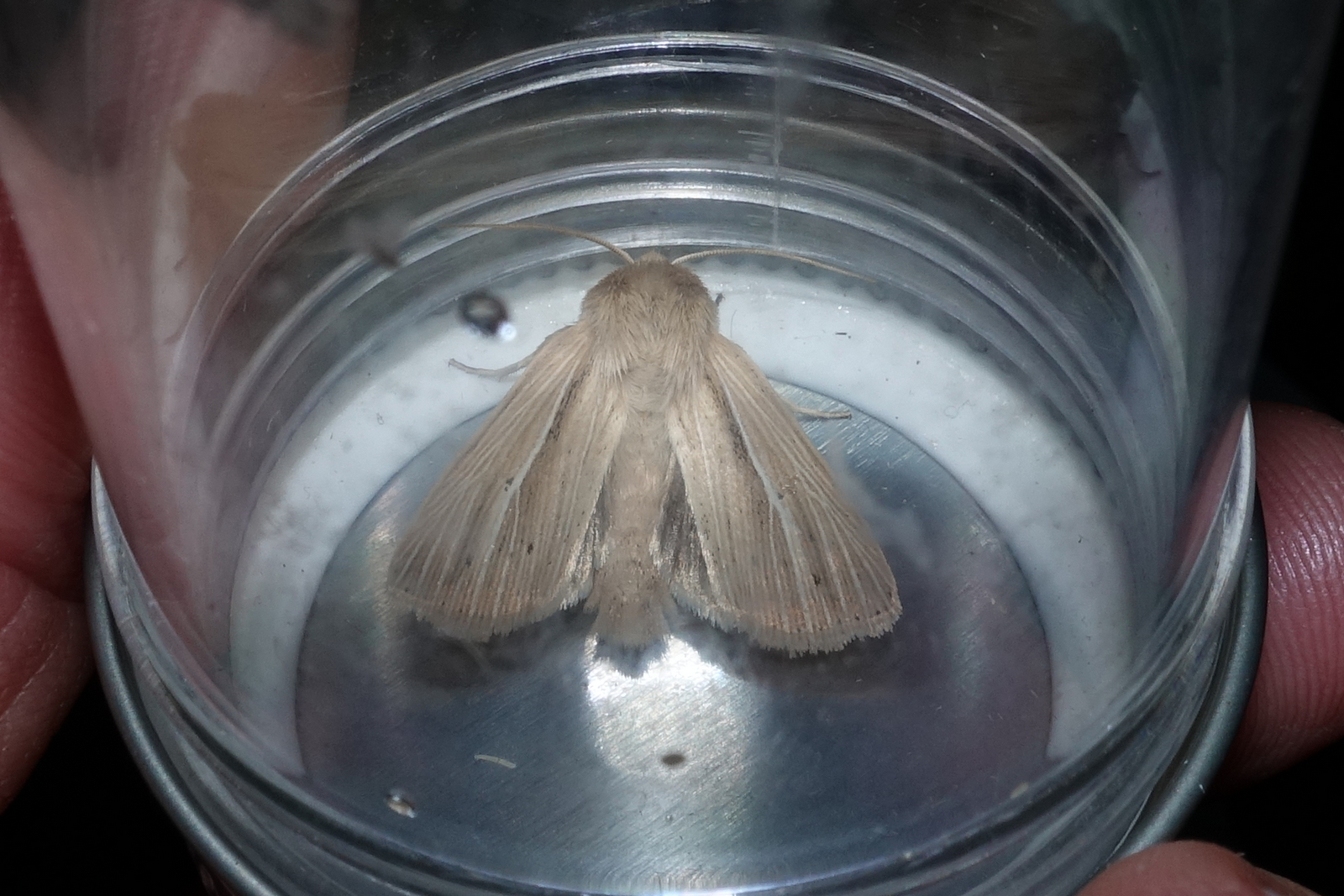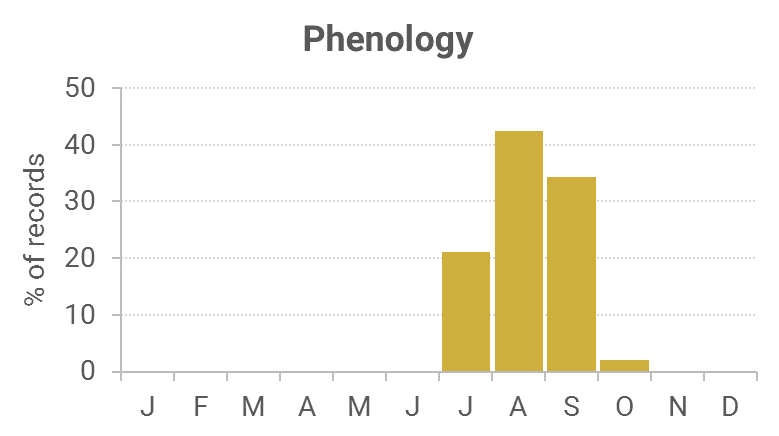Identification
The small size, broad forewing, which is very variable in colour, has a dark grey or brown central streak and a curved row of dots.
Recording Method.
Attracted to light.
Life cycle
One generation. Overwinters as a larva during September to early July, feeding within the stems, with pupation taking place there or close to the ground.
Larval foodplants
Sedges, Reed Meadow-grass and other grasses.
Habitat
Fens, marshes, damp woodland and boggy moorland.
History 1860-2010
The fourth field meeting of the Dumfries & Galloway Natural History Society took the train to Lochanhead Station, then proceeded on foot to Lochaber and through the glen towards Mabie House where the first for our Region was found on 2nd August 1878. Gordon (1913) had found it abundant in damp, rushy hollows, being very variable in colour from whitish to deep red ochreous. Earliest date was 16th July 1911 and the latest on 28th September 1897.
Archibald Russell (1944) listed it as occurring near Gatehouse of Fleet (VC73) during the years 1942-43.
Between 1964 and 1973 there were just five records, but from the setting up of the Rothamsted stations from 1974, to 1991, there were nearly two hundred records, from all seven stations, proving it to be a widespread moth.
Otherwise from 1987 to 2010 there were nearly four hundred records, mainly from the regular trapped sites at Kirkton, Durisdeer, Cally Woods and Old Torr, with the rest from widely scattered sites across the region.

